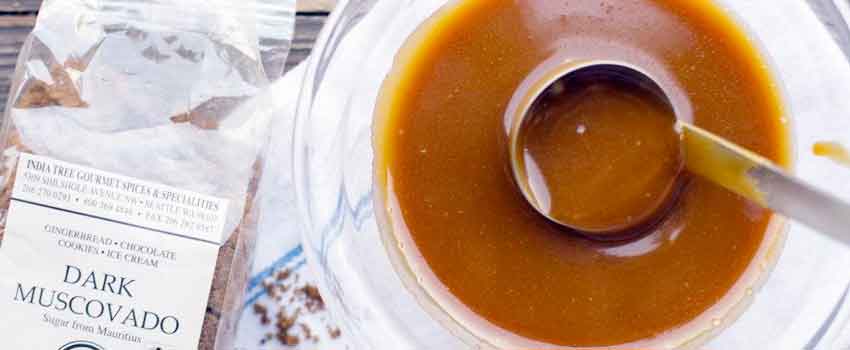Sugar is to butterscotch as reconstituted frozen concentrated orange juice is to a juicy navel orange. The range of flavors and nuances derived from sugar cane as it is processed into sugar are great and far from just one-note-sweet.
Shall we discuss butterscotch for a quick moment? Let’s explore how it’s extracted first. Granulated sugar as we purchase it (super white and rather fine) is processed from the sugar cane. This thick, fibrous stalk resembling a juicy stalk of bamboo is milled between two rollers to extract its clear, sweet juices. This juice is then cooked down until dark and syrupy (molasses)!, leaving behind golden sugar crystals. The molasses are bottled while the crystals* go through a series of washes grinds to get from golden, grainy turbinado-like consistency all the way down to the white crystals we’re buying in 5 lb. bags.
Where does butterscotch fit into this picture? For starters, butterscotch and its flavor aren’t naturally found in a bag of beige chips at the supermarket. If you inhaled an open bottle of molasses and smelled its sweet, pungent, bitter-but-tangy sweetness, you were experiencing a true, intense butterscotch aroma bath. Brown sugar is made by adding molasses back into washed sugar crystals and has some butterscotch notes (the darker the brown sugar, the more pronounced they are), but the best and most effective way of introducing the flavor into your recipes is with Muscovado sugar. This deep brown product is packaged up before the molasses are full extracted and can be purchased at Whole Foods and online from India Tree, though dark brown sugar, especially the Organic brands, will work just fine as a substitute.
So where does that leave you when you’re craving butterscotch pudding or a perfect butterscotch sauce to pour over your ice cream? We’ve got a collection of recipes featuring the flavor, delivered in a variety of ways. Before you get started, consider the following for Butterscotch success:
- Brown sugars burn fast. You’ll notice that most recipes call for dissolving the sugar in liquid like milk or cream; try to melt brown or Muscovado sugars and you’ll note how quickly they burn compared to their white, granulated cousin. Stick to infusing the sugar first when making puddings, caramels and pie fillings.
- Organic brown sugar works way better than conventional. The granulated sugar that this product begins with is unbleached and has far more flavor compounds than the white variety. The color is a richer hue and the sugar has far more moisture and flavor than regular brown sugar.
- Cookies! When a cookie recipe calls for brown sugar, try subbing out half of it for Muscovado for a more intense flavor. Watch the cookies carefully when baking, however, as this sugar caramelized at a quicker rate than regular brown sugar.
*Notice there’s no such thing as raw sugar? It’s because the syrup has to be cooked down in order to denature the cane. Sugar in the Raw is simply unwashed or just slightly washed sugar crystals. Lesson here? No way to get sugar without cookin’.

